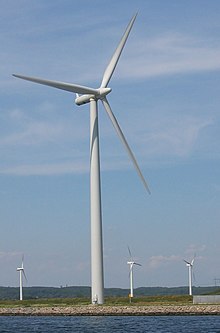UPDATE FROM THE GULF FROM LEAN
Where has all the BP oil gone?
The question, ‘where has all the oil gone?’ has been answered in the media in recent days by scientists providing much speculation about how the oil may go away but little hard data about what is actually happening in the Gulf. We cannot let the future of the Gulf rest on speculation.
The danger of this conjecture is that people are already beginning to tune out and assume that everything is fine, even within the spill response.
So, where is the oil?
Oil in grass between Oyster Bayou and Taylor’s Bayou, St. Mary’s Parish, Louisiana, July 30, 2010, Photo Credit: Antonia Juhasz. Oil in grass, St. Mary’s Parish, La, July 30, 2010, by Antonia Juhasz.
The BP oil can be found on the shores of St. Mary Parish. Just yesterday, July 30, 2010, stretches of shoreline along St. Mary Parish were found that were significantly oiled. This area was believed to be safe from the spill and was not given any attention by Unified Command. Even the St. Mary Parish President thought that they would not receive oil. (1)
Oil South end of Oyster Bayou, St. Mary’s Parish, Louisiana, July 30, 2010, Photo Credit: Antonia Juhasz. Oyster Bayou, St. Mary’s Parish, La, July 30, 2010, Photo by Antonia Juhasz
The BP oil can be found under the shells of post-larval blue crabs all across the northern Gulf of Mexico. As reported in a previous E-ALERT, researchers in Mississippi had found post-larval blue crabs with oil under their shells. Now the researchers have given another update on their findings and it is sobering. Nearly all of the crab larvae that the researchers have collected to date, from Grand Isle, LA to Pensacola, FL, have BP’s oil under their shells, but it doesn’t stop there. Chemical analysis suggests that the crabs may also contain the Corexit dispersants used on the spilled oil. Only time will tell if this contamination will affect commercial harvests but equally troubling is the potential for toxic materials to make their way into the food chain as these tiny crabs are important food sources for a host of other sea creatures. (2)
Yellow oil droplets can been seen under the shell of a post-larval blue crab. Yellow oil droplets can been seen in a post-larval blue crab.
Scientists saying that the effects of the BP oil spill will be minimal are speculating from very little data. It may make the media happy and the news more interesting but it is not good science to speculate on the outcome of the oil spill studies before they are even well underway.
The BP oil can also be found in “plumes” of dispersed oil floating around deep under the surface of the Gulf of Mexico. Researchers at the University of South Florida have confirmed that these “plumes” are, in fact, clouds of BP’s oil. (3)
Because of the massive use of dispersants, which conveniently shield the impacts from view, the real damage is much harder to quantify. The dispersal of the oil has caused an unknown, but undoubtedly very large, portion of the spilled oil to be mixed into and spread all through the Gulf waters in tiny little bits.
The damages caused by this sub-surface oil may not be apparent for some time. Like the crabs; the juvenile forms of fish, shrimp and many other species as well as the plankton they feed on will be exposed to the toxicity of the oil and the dispersants.
Imagine your city filled with smoke from a large fire. Now replace the air with water and the smoke with tiny droplets of dispersed oil and you have a better sense of how the ‘plumes’ of oil are impacting sea creatures.
That damage is difficult to quantify but to dismiss it as minimal is irresponsible. Many commercial and sport species in one of the most biologically productive areas of the world are being exposed to a mixture of materials that are known to be toxic and we really don’t know what the effects will be.
It is too early to be speculating about the impacts of the millions of barrels of BP oil on Louisiana and the Gulf of Mexico. It is especially problematic when its done by scientists in the media. We need to be focused on figuring out what actually is going on in the Gulf with thorough research and sound data.
The real answer to the question is this: significant amounts of the oil are still out in the Gulf environs and we really don’t know what the long term effects will be.
1. Antonia Juhasz, “BP’s “Missing Oil” Washes Up in St. Mary’s Parish, LA,” The Huffington Post 30 July 2010, .
2. Dan Froomkin, “Scientists Find Evidence That Oil And Dispersant Mix Is Making Its Way Into The Foodchain,” The Huffington Post 29 July 2010, .
3. Sara Kennedy, “Researchers confirm subsea Gulf oil plumes are from BP well,” McClatchy Newspapers 23 July 2010,
:}
More tomorrow.
:}










